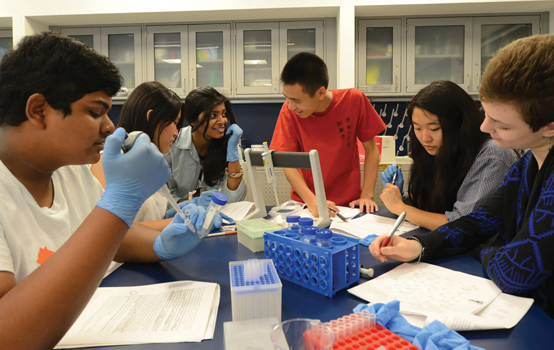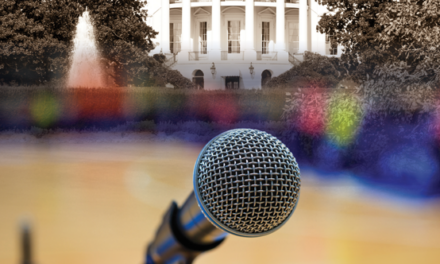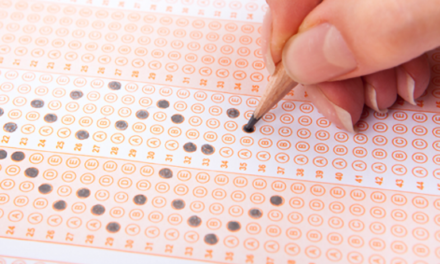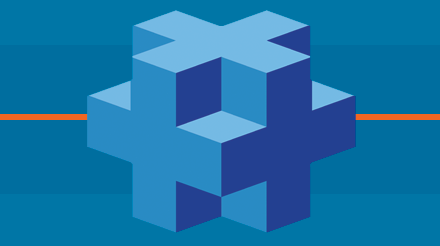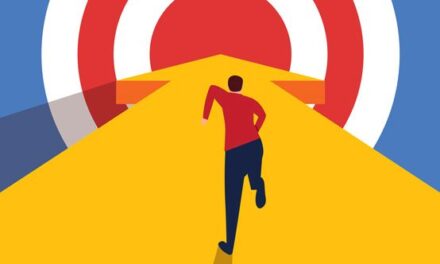Photo courtesy American Museum of Natural History
The Science Research Mentoring Consortium gives students who are underserved by in-school STEM programs the opportunity to engage in research with the support of mentor scientists.
Imagine a network of universities, museums, hospitals, and community-based organizations collaborating to provide after-school and summer mentoring in science for students who are deeply interested in the subject but who lack opportunities to study it at an advanced level. For the last six years, our research team has been examining a consortium of 24 programs across the boroughs of New York City that provides just that. Founded in 2011, the Science Research Mentoring Consortium serves about 500 students annually at sites across Manhattan, Brooklyn, Queens, and the Bronx, and it provides an encouraging example of how multiple institutions can work together to complement in-school learning (Chaffee et al., 2021; Hammerness et al., 2017).
Out-of-school programs can offer personalized learning experiences that deepen students’ knowledge and cater to their passions and interests. The painful reality, however, is that many such programs are available only to students from privileged backgrounds (Heller, 2020; Wai & Worrell, 2020). The Science Research Mentoring Consortium shows that it is possible to provide such advanced opportunities not just equitably but also economically. The entire program costs approximately $4,000 per student, and the total annual cost of roughly $2 million is only slightly more than New York City spends just to screen students for admission into school-based gifted and talented programs (Veiga, 2021). Investing in such partnerships has special promise to activate support for students eager to have access to extended learning resources and opportunities.
Citywide science mentoring
The Science Research Mentoring Consortium brings together 24 programs in New York City to address the long-standing inequities that limit the participation of historically marginalized youth in advanced STEM studies. The sites include 15 universities, three museums, four community-based organizations, and one hospital, each of which reaches 10-60 youth. The consortium is fully funded by one foundation and is administered by the American Museum of Natural History. Each institution in the program fundraises for its own science research mentoring program and receives some financial support from the foundation that funds the consortium. The directors of all 24 sites meet bimonthly to review student and mentor recruitment and programming, collaborate on evaluation and research, and discuss common challenges. But while these meetings enable program leaders to coordinate their work and share resources, the sites retain their autonomy, and they can choose whether and how to adapt resources to fit their unique institutional settings.
Each year, an average of 350 scientist mentors lead roughly 500 high school juniors or seniors through research experiences. Many of these students go on to pursue STEM majors in college; our longitudinal study, which has been following graduates for five years and will continue to track students for the next five years, finds 75% of alumni in college report majoring in a STEM discipline (Gupta et al., 2021). Further, we’ve found that participants have gone on to take and pass more science and mathematics classes in high school, compared to their peers, and participation has also been associated with increased school attendance. We also found that large numbers of students said they learned significantly more about scientific practices and content in their mentored research experiences than they do in school — even those who attend a specialized science high school.
Students reported that working on research projects allowed them to focus on something other than the pandemic.
The consortium’s mentoring programs all include at least 70 hours of preparatory coursework, offered after school or on weekends, followed by at least 100 hours of mentored research alongside a scientist. Students design and plan investigations, collect and analyze data, learn and use scientific language, solve problems with peers, and read and discuss scholarly sources. While the program design is similar across sites, the type of research students engage in depends on the given site’s scientific expertise. For example, students working with scientists at the American Museum of Natural History may focus on astrophysics, genomics, or cultural anthropology; those paired with researchers at the Mt. Sinai School of Medicine focus on medical topics; and those at Wave Hill Botanical Gardens work in conservation biology. Similarly, the specific science practices students engage in also vary across sites. For example, if the mentor scientists focus on field work, then students tend to engage in data collection, background research, and analysis; if the mentors focus on laboratory work, then students tend to engage in more experimentation and synthesis.
Serving students
The consortium serves a student community that represents the racial and ethnic diversity of New York City. For example, in the 2017 and 2018 cohorts, almost half of all students are from families with parents born outside the U.S. (46%), and more than half are multilingual (52%). They are predominantly students of color (30% self-identify as Asian, 28% as Latinx, 13% as Black, 13% as white, and 7% as multiracial). Further, each consortium site pays students a stipend, making it easier for students to participate if they rely on income from an after-school or summer job. (Stipend amounts at each site may vary based on program length.)
Recruitment continues to be an evolving issue for the programs in the consortium. Traditionally, teachers in schools throughout the five boroughs encouraged students to apply for the program, but we recognized over time that teacher bias could influence decisions about which students were told about the opportunity. We also used to require transcripts and essays but removed those aspects of the application when we realized that the requirement created perceptions that these programs were only for academically strong students. Over the past five years, we have continued to reshape our recruitment efforts to center issues of equity and access. For example, we revised the marketing and recruitment materials and changed the nature of the conversation with schools to be more explicit about the type of student we want — namely, students who are under the radar and have a strong interest in science. The consortium meets, reviews, and revises its approaches throughout the year to tackle the issue of recruitment.
The scientist mentors receive compensation and/or financial resources for vital lab equipment and materials. Also, because mentors may have little to no formal preparation for working with high school students, the consortium requires them to attend workshops on guidelines and strategies for effective mentoring. The specifics vary across sites but typically include one to four required sessions on effective mentoring practices with young people; what it means to mentor students from racial, ethnic, and socioeconomic backgrounds that are different from the mentor’s; and how unconscious bias might affect mentoring relationships. Several sites have added workshops about how mentors can support students to explicitly consider sociocultural aspects of science and how it, as a discipline, is shaped by power, privilege, and oppression. According to survey responses from students and our interviews with them, these mentor-preparation workshops appear to be bearing fruit, as a substantial percentage of students describe feeling understood, known, and guided by their mentors. They say that they feel a sense of belonging at their research site and that they believe their individual efforts and contributions matter to the team.
Further, in a recent survey of 730 participants in the consortium, students overwhelmingly reported that the experience led to new opportunities for them to further their education, telling us, for instance, that faculty in college view them as being highly qualified for working in labs and doing scientific research in college, due to their experience in high school. If it’s true that the consortium creates a “domino effect,” in which each positive experience leads to the next one, then we see that as an especially powerful outcome. While relatively privileged students typically accumulate opportunities in this way, it’s less common for students from historically marginalized backgrounds to do so.
Adapting in a crisis
During the pandemic, within a few weeks of our museum’s closure in March 2020 and the move to remote learning in New York City schools, the mentoring programs moved completely online and continued to be remote during the 2020-21 school year (Hammerness et al., 2021). In the spring of 2020, participation was varied because students faced many challenges that would understandably limit their involvement, such as the illness or death of family members, housing insecurity, screen time exhaustion, and limited internet access. By the summer of 2020, however, participation and attendance gained strength as students accepted that online learning was the only option, New York’s COVID rates were declining, and more outdoor activities and socialization opportunities were possible. Students reported that working on research projects allowed them to focus on something other than the pandemic. For example, one team of students from the American Museum of Natural History set up microphones and recorders across New York City and created a machine learning model that could detect coyote sounds amid the city’s background noise — they aim to provide an inexpensive means of detecting coyotes in city neighborhoods.
Although most projects take place during the summer, for the handful of consortium sites that have school-year mentoring, the fall of 2020 brought a little more anxiety for both staff and students, as COVID cases began to rise and some students had to adjust to hybrid schooling. Since staff expected that anxiety, they emphasized flexibility, compassion, and community-building in their programs to support participation and attendance. By the end of the 2020-21 school year, completion rates had risen to levels comparable to pre-pandemic times. Many students expressed gratitude for the consistency of the program and for the support of their mentors at a time when they most needed to have trusted adults in their lives. As one participant reflected, having a mentor “during this confusing time” was “critical to my senior year and college process.”
Key principles for collaborative partnerships
Some might argue that New York City is uniquely situated to support such collaborative educational programs. After all, it is a large city with an unusually high concentration of cultural and scientific institutions, and not every community boasts a large number of organizations of this kind, much less organizations that are eager to join such a consortium. However, we suspect that these kinds of partnerships can flourish in many cities or school districts that are smaller or have fewer potential partners. Our experience suggests that, even in districts where there may not be as many clear partners, considering hospitals, universities, and even companies (in fields such as technology, engineering, or bio-technology) as fruitful collaborators could be a useful strategy. We would not, however, advocate that programs focus completely upon remote mentoring as an alternative. While students in our program were grateful for the continuation of the program remotely, they were also extremely eager to return to in-person mentoring and were very clear about its importance.
Partnership programs like the Science Research Mentoring Consortium can create more opportunities for a wider array of students by developing recruitment and application strategies to attract students from groups that have been historically underserved.
The design principles that guide the work have not changed as the consortium has grown from nine to 24 sites, and we see no reason why they wouldn’t work equally well for a small program that relies on just two or three partner organizations. Further, while the programs we study focus on providing students with advanced research opportunities in STEM, we see no reason why such partnerships can’t focus on any subject area. The principles themselves are straightforward:
Invest in long-term support instead of short-term programs. The institutions participating in these programs have to make deliberate choices about how best to allocate their resources (especially the time of site leaders and mentors) to provide the most valuable learning experience for the largest number of students. In some cases, this has meant choosing not to offer the sorts of brief, drop-in programs that are often typical of out-of-school programming (Chi, Dorph, & Reisman, 2015). Rather, most institutions have chosen instead to invest in programs that involve long-term commitments from children, youth, families, and teachers. Such commitments support the development of trusting working relationships among educators and children and foster deeper learning over time (Dorph, Chi & Reisman, 2015; Habig et al., 2018).
Allocate and pool resources. Collaboration can be challenging for institutions like museums, zoos, and university research centers that have always raised their own funds and offered their own unique educational programs. But in our study, we’ve found that the each of the programs (and its participating mentors and students) has benefited from the consortium’s emphasis on sharing funds, resources, materials, and expertise across institutions, and each has come to see the value in doing so, both to learn from one another and to ensure the various sites provide students with experiences that are equal in quality, intensity, and duration. Further, we’ve found that because each site has appropriate funding, including resources for staff and program coordination, participating institutions do not have to compete with each other for the same funding sources.
Define each site’s particular expertise. With 24 sites available, the Science Mentoring Research Consortium is able to provide students with a range of options, touching on a wide variety of STEM disciplines. However, no single institution has the burden of trying to offer everything — each one can focus on what it does best. In areas where there are only a few potential partner institutions, the key is to determine what assets and unique resources each partner brings, as well as areas of overlap, to ensure that as many different opportunities are available as possible.
Constantly assess and adapt. In recent years, the consortium’s leaders have asked themselves whether their work could in some way bolster the systematic inequalities they’ve aimed to dismantle (Lewis & Diamond, 2015). This question took on special urgency in 2020 with the shift to remote schooling, coupled with the murder of George Floyd and the renewed national focus on the Black Lives Matter movement. Specifically, the consortium has been exploring three areas in which they could deepen their commitment to equitable programming: (1) recruitment, (2) scaffolding for participation, and (3) scientist mentor preparation. For instance, the group is currently reviewing the requirement that students have strong records of academic performance. Could this present a barrier for students who are highly interested in science and could benefit from these opportunities but who’ve struggled, for whatever reason, to maintain a high grade point average? Could the application process be made more inclusive while still ensuring that students admitted to the rigorous program are able to succeed? While we don’t know how the consortium will answer these questions, we suspect that its willingness to acknowledge and confront such challenges will serve it well over the long term.
Develop and maintain infrastructures. We’ve found that the work of the consortium has benefited from adopting a number of shared routines and structures. For example, the partners have agreed on certain common program features (such as the hours of coursework they require, their approach to mentoring, and core teaching strategies) that all sites must implement. Similarly, all of the organizations have agreed to devote a regular block of time during partnership meetings to examine and discuss student work and to assess the quality of their learning opportunities. And each organization has agreed to engage in regular research and evaluation of its programs, making changes as needed in response to data, local policy shifts, and evolving needs.
Building the momentum
Among the many realizations spurred by the COVID-19 pandemic has been the important role of out-of-school learning for students and the potential for out-of-school learning experiences not only to complement but to extend educational opportunities for children and youth (Hatch, 2021). Many programs designed to develop students’ talent, such as in-school gifted and talented programs and specialized high schools, offer resources to students who already have educational advantages, only serving to make schools more segregated (Miller, 2019). Partnership programs like the Science Research Mentoring Consortium can create more opportunities for a wider array of students by developing recruitment and application strategies to attract students from groups that have been historically underserved, then continually revising and revisiting their programming to ensure mentors are able to provide the scaffolding and supports needed to welcome students into the science community.
The design principles that make these programs successful could be applied to other disciplines as well. Programs that span disciplines can create an ecosystem of out-of-school partnerships that can improve student outcomes and encourage young people to pursue a variety of interests more deeply than they can in school. Mobilizing such collective partnerships in service of children’s learning and development is an important act of hope for students, educators, and community partners.
References
Chaffee, R., Gupta, P., Jackson, T., Hammerness, K. (2021). Centering equity and access: An examination of a museum’s mentored research youth program. In B. Bevan & B. Ramon (Eds.), Making museums more equitable: Structural constraints and enduring challenges surfaced through research and practice perspectives. Taylor and Francis.
Chi, B., Dorph, R., & Reisman, L. (2015). Evidence and impact: Museum-managed STEM programs in out-of-school settings. University of California, Berkeley, Lawrence Hall of Science.
Gupta, P., Hammerness, K., Podkul, T., & Chaffee, R. (2021, August). Staying in science: Examining the pathways of underrepresented youth in mentored research (Outcomes Report). American Museum of Natural History.
Habig, B., Gupta, P., Levine, B., & Adams, J. (2018) An informal science education program’s impact on STEM major and STEM career outcomes. Research in Science Education. 50, 1051-1074.
Hammerness, K., MacPherson, A., Macdonald, M., Roditi, H., & Curtis-Bey, L. (2017). What does it take to sustain a productive partnership in education? Phi Delta Kappan, 99 (1), 15-20.
Hammerness, K., MacPherson, A., Wallace, J. & Chavez-Reilly, M. (2021). Pivoting in a pandemic: An evaluation of the American Museum of Natural History educational programming during the COVID-19 pandemic-related museum closure. American Museum of Natural History.
Hatch, T. (2021). Expanding the boundaries of learning. Phi Delta Kappan, 102 (8), 8-13.
Heller, R. (2020). The Editor’s Note: The economics of talent development. Phi Delta Kappan, 102 (4), 4.
Lewis, A. & Diamond, J. (2015). Despite the best intentions: How racial inequality thrives in good schools. Oxford University Press.
Miller, J. (2019, September 30). How NYC’s gifted programs make segregation worse. ACLU of New York.
Veiga, C. (2021, January 28). NYC education panel rejects ‘gifted’ testing contract, upending mayor’s plans. Chalkbeat.
Wai, J. & Worrell, F.C. (2020). How talented low-income kids are left behind. Phi Delta Kappan, 102 (4), 26-29.
Weinstein, M., Whitesell, E.R., & Schwartz, A.E. (2014). Museums, zoos, and gardens: How formal-informal partnerships can impact urban students’ performance in science. Evaluation Review, 38 (6), 514-545.
Whitesell, E.R. (2016). A day at the museum: The impact of field trips on middle school science achievement. Journal of Research in Science Teaching, 53 (7), 1036-1054.
Note: Research findings reported in this article are based on collaborative work supported by the National Science Foundation under Grant No. 1561637, titled Staying in Science: Examining the Pathways of Underrepresented Youth Mentored in Research. Any opinions, findings, and conclusions or recommendations expressed in this material are those of the authors and do not necessarily reflect the views of the National Science Foundation.
This article appears in the December 2021/January 2022 issue of Kappan, Vol. 103, No. 4, pp. 49-53.
ABOUT THE AUTHORS

Anna MacPherson
ANNA MACPHERSON is the senior manager of educational research and evaluation at the American Museum of Natural History, New York, NY.

Karen Hammerness
KAREN HAMMERNESS is the senior educational research director at the American Museum of Natural History and the author of Preparing Science Teachers Through Practice-Based Teacher Education .

Preeti Gupta
PREETI GUPTA is the senior director of children and youth programs at the American Museum of Natural History.

Tramia Jackson
TRAMIA JACKSON is the senior director of the Science Research Mentoring Consortium at the American Museum of Natural History.

Rachel Chaffee
RACHEL CHAFFEE is the senior education researcher at the American Museum of Natural History.

